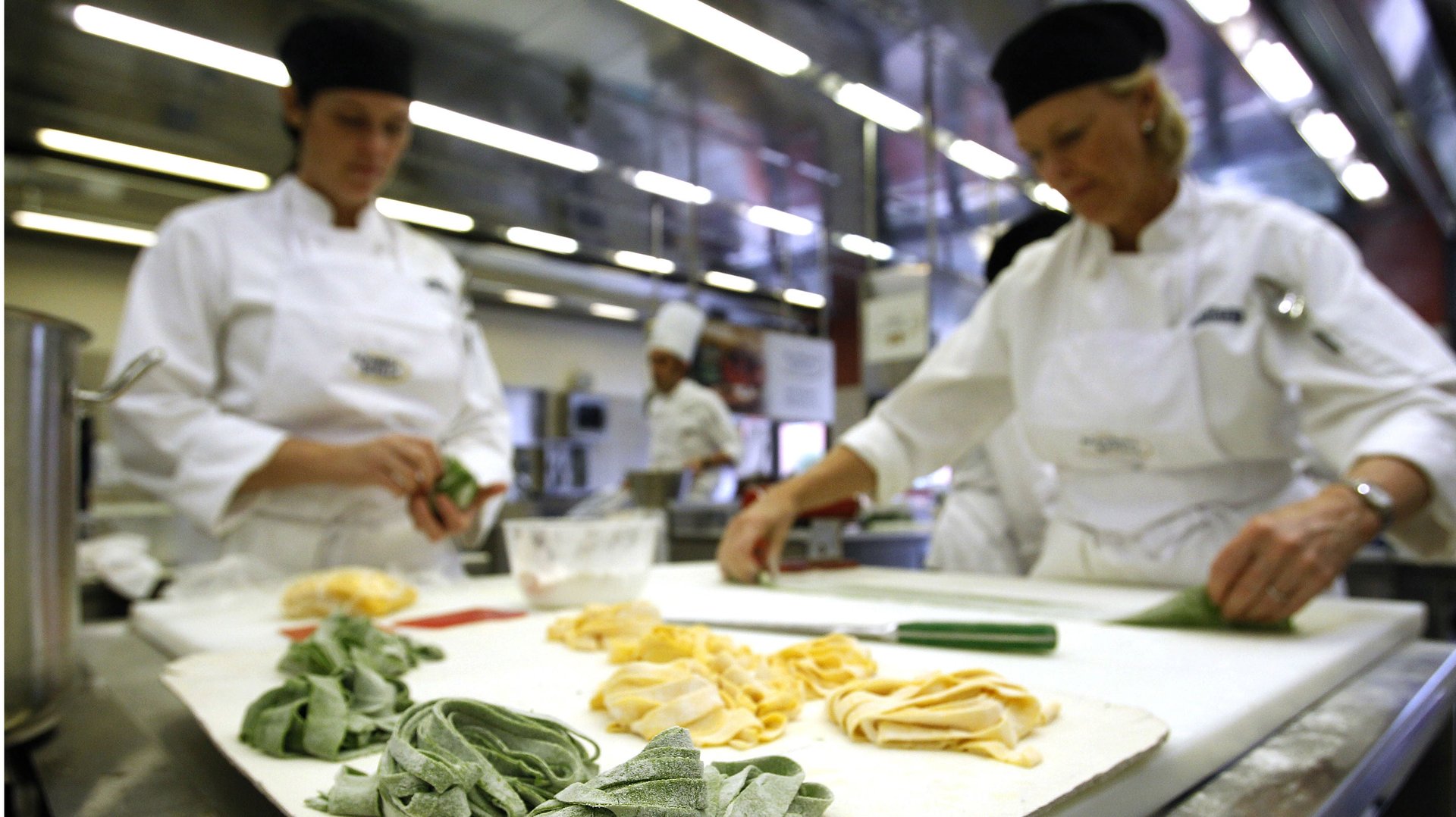Just because Martha Stewart cooks pasta in one pan doesn’t mean you should
Pasta is perfect. Fact.


Pasta is perfect. Fact.
It’s delicious, it’s easy to make and—no matter what carb-hating, paleo-enthusiasts will tell you—it’s a perfectly fine food to consume. Pasta won’t make you fat, and if you disagree you are welcome to try and tell Sophia Loren.
These are qualities to be accepted, embraced, and—most importantly—respected. Any attempt at tinkering with pasta (enriched pasta, for instance, or—god forbid—bean pasta) bear results that are pathetic at best. Unless you must—as in, if you have a condition that makes it impossible for you to eat real pasta, in which case you are to be pitied and cuddled profusely—there is absolutely no reason under the sun why anyoneone should attempt at “improving” pasta.
Pasta cannot be improved—that’s why it’s perfect.
The only thing about pasta that might be open to experiment is its shape, though the many variations of penis-shaped pasta present a good argument for restriction of even this one freedom.
But, truly, most things about pasta are not open for debate: chicken does not belong on its top, pasta must be cooked in salty water, and the pasta and its condiments are to be cooked separately. Though the internet seems to think otherwise.
It’s called “one-pot” or “one-pan” pasta and it’s essentially pasta cooked in nine minutes with all of the ingredients in the same pot. It’s a thing—so much so that there is a Buzzfeed listicle of different types of one-pot pasta (of course there’s a “chicken riggies”), and over 9,000 Instagram pictures tagged #onepotpasta.
Apparently, one-pot pasta has been a thing for a while: its recipe was published in Martha Stewart Living in May 2013, and was tried by Martha herself (and then included in her book One-Pot) after it was imported into the US by TV chef Nora Singley, who learned it from a cook in Peschici, Italy.
The man—to Singley’s initial shock—gave her his mother’s secret recipe for pasta with tomato sauce, all cooked in the same pot. Here’s how it works: take a pan, add spaghetti, garlic, onion, tomato, hot pepper, salt, pepper, and extra-virgin olive oil, then pour in water. Turn on the flame, mix every once in a while and voilà—nine minutes later, your pasta is ready.
Insert horrified emoji.
See, every Italian mother has a friend who swears by cooking pasta in a pressure cooker (thankfully, it always appears to be someone else’s mom, or Michelle Obama). There are Italians who break spaghetti in half to cook it. This doesn’t mean it’s a good idea. Not even if Martha Stewart thinks it is.
Not to be (too) prejudicial, I decided to make this famed one-pot pasta, and see for myself before I openly criticized it.

I followed the instructions, made the pasta—and ate it, too. I was genuinely amazed at the fact that this weird cooking method worked. I was pretty hungry, so I literally devoured the first helping and dished out another before pondering the results.
Was the one-pan pasta bad? No.
But (much more importantly) was it good? Of course not.
Those enthused with the recipe praise its “perfectly starchy” quality. But the reality is that starch comes from pasta that is overcooked, or has been sitting in water too long. Pasta is, after all, short for pastasciutta, which literally means it’s dry. (Fun fact: one alternative name for pasta was minestra asciutta, or dry soup.) The beautiful consistency contrast between pasta al dente and freshly made sauce, of all varieties, was completely lost. The onions were a bit soggy (not to mention, there is no need for both garlic and onion, hot pepper and black pepper), the tomato watery.
This dish was fine to fill a stomach (I had two full helpings), but it’s merely functional, and discredits the first objective of pasta with tomato sauce: to bring comfort—and sheer joy.
There is absolutely no reason to turn pasta into something utilitarian, even if the shortcut worked well, (which it doesn’t).
For all the joy pasta and pasta sauce bring into your life, the least you can do is give each its own pot.